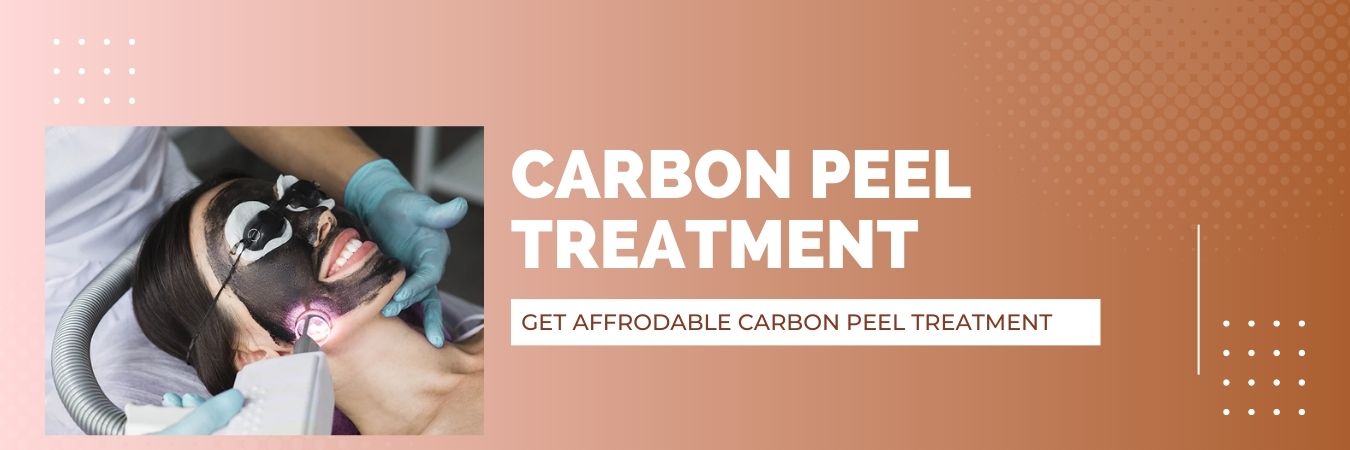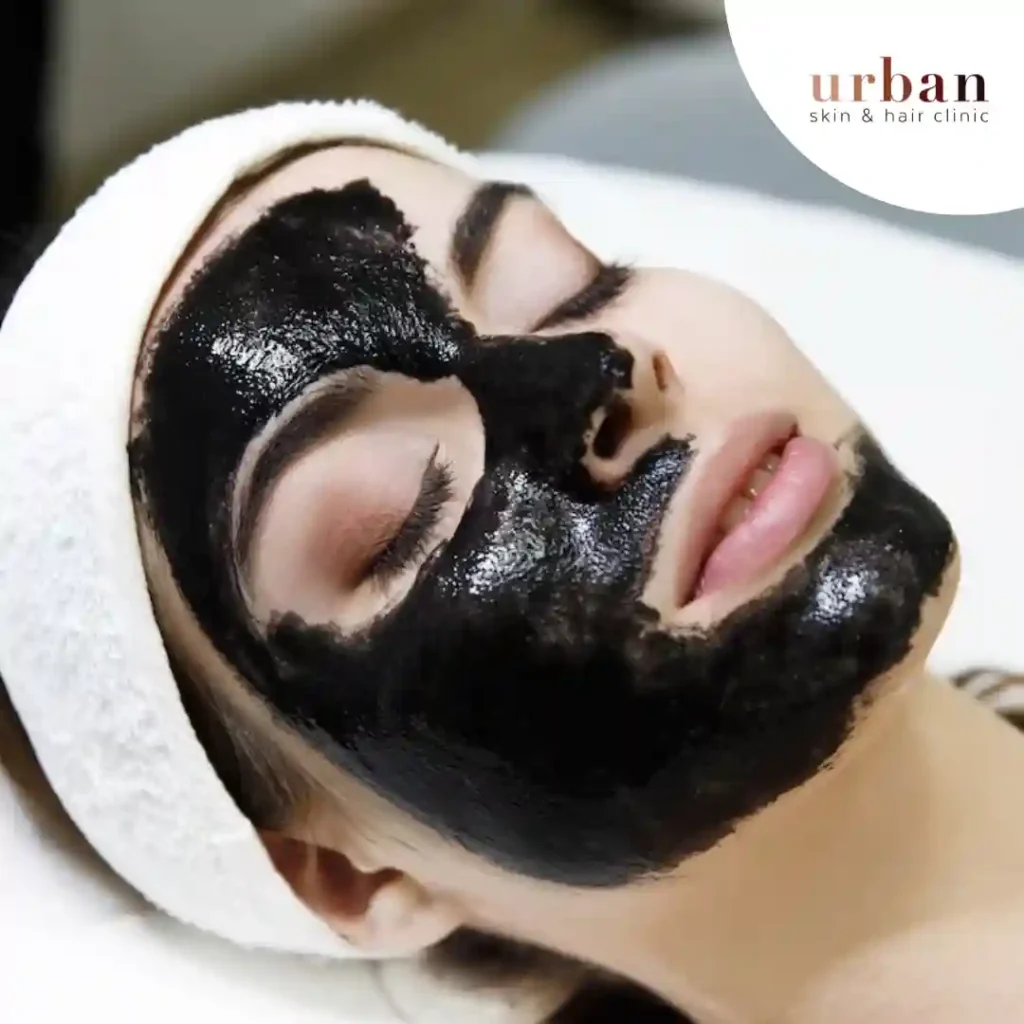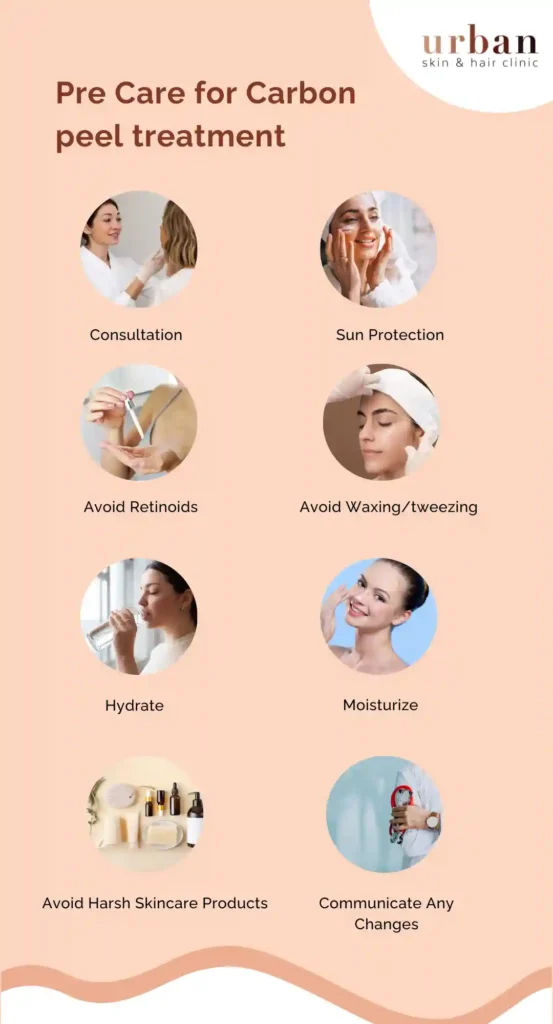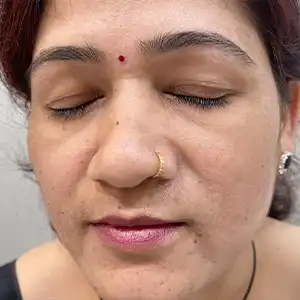
Introduction
In the ever-evolving world of skincare, new treatments and techniques continuously emerge to address various skin concerns. One such breakthrough in the realm of facial rejuvenation is the carbon peel treatment. This innovative procedure has gained popularity among individuals seeking a non-invasive yet highly effective solution for skin rejuvenation, acne reduction, and overall skin enhancement.
The carbon peel treatment, also known as the Hollywood peel or the carbon laser facial, combines the power of laser technology with the purifying properties of activated carbon. By harnessing these elements, this treatment offers a unique and revitalizing experience for your skin.
In this comprehensive guide, we will delve into the intricacies of carbon peel treatment, exploring its benefits, the procedure itself, and what you can expect during and after the treatment. Whether you’re dealing with acne-prone skin, uneven texture, enlarged pores, or simply looking to achieve a radiant and youthful glow, the carbon peel treatment may be the ideal solution for you.
So, let’s dive deeper into the world of carbon peel treatment and discover the transformative effects it can have on your skin.
What is Carbon Peel Treatment?
Carbon peel treatment, also known as carbon laser facial or Hollywood peel, is a revolutionary skincare procedure designed to rejuvenate and revitalize the skin. It combines the power of laser technology with the absorption properties of carbon to target various skin concerns and promote a more radiant complexion.


Carbon Peel treatment Procedure
Step 1: Consultation and Skin Assessment Before undergoing a carbon peel treatment, you will have an initial consultation with a skincare professional at the treatment center. During this consultation, your skin will be assessed, and your specific concerns and goals will be discussed. The professional will determine whether you are a suitable candidate for the treatment and develop a personalized treatment plan.
Step 2: Cleansing and Preparing the Skin On the day of the treatment, your face will be thoroughly cleansed to remove any makeup, dirt, or oils. This step ensures that the carbon peel solution can penetrate the skin effectively. The treatment area is then prepared by applying a gentle exfoliating cleanser to remove any dead skin cells and debris.
Step 3: Application of Carbon Solution Once the skin is prepped, a thin layer of liquid carbon solution is evenly applied to the treatment area. The carbon solution contains fine particles that help to absorb impurities, oils, and dead skin cells from the skin’s surface and within the pores. The carbon particles act as a target for the laser energy during the subsequent steps.
Step 4: Laser Treatment After the carbon solution has been applied, a specialized laser device is used to deliver precise pulses of light energy to the skin. The laser is calibrated to specific settings that are safe and effective for your skin type and concerns. As the laser is passed over the treatment area, it interacts with the carbon particles, creating a controlled thermal effect.
Step 5: Carbon Vaporization and Exfoliation As the laser energy interacts with the carbon particles, the carbon solution on the skin’s surface vaporizes, gently exfoliating the skin. This exfoliation process helps to remove dead skin cells, unclog pores, and stimulate collagen production. The laser’s thermal energy also promotes circulation, further enhancing the skin’s rejuvenation process.
Step 6: Cooling and Soothing After the laser treatment, a cooling and soothing mask or gel may be applied to the treated area to alleviate any discomfort or redness. This step helps to calm the skin and reduce any potential inflammation. The cooling sensation provides a refreshing and relaxing experience, leaving your skin feeling revitalized.
Step 7: Post-Treatment Skincare Once the cooling period is complete, a skincare professional will apply appropriate post-treatment skincare products to nourish and protect the skin. These products may include moisturizers, serums, or sunscreen to ensure proper hydration, promote healing, and safeguard the skin from UV damage.
Step 8: Aftercare and Follow-up After the carbon peel treatment, the skincare professional will provide you with detailed aftercare instructions. It is crucial to follow these instructions to optimize the results and minimize any potential side effects. Additionally, they may recommend a series of follow-up sessions spaced over several weeks to achieve the desired outcomes.
The carbon peel treatment procedure offers a comprehensive approach to skin rejuvenation, addressing concerns such as acne, enlarged pores, uneven skin tone, and signs of aging. By following these steps, you can experience a revitalizing and transformative treatment that leaves your skin looking radiant, refreshed, and more youthful.
Benefits of Carbon Peel treatment
1. Skin Rejuvenation: Carbon peel treatment stimulates collagen production, promoting skin renewal and rejuvenation. The controlled thermal effect of the laser encourages the growth of new skin cells, leading to a smoother, more youthful complexion. Over time, you may notice a reduction in the appearance of fine lines, wrinkles, and skin laxity.
2. Improved Skin Texture: The exfoliating properties of carbon peel treatment help to refine skin texture and minimize the appearance of pores. By removing dead skin cells, excess oils, and debris, this treatment leaves your skin feeling smoother, softer, and more even in tone.
3. Acne Reduction: Carbon peel treatment is highly effective in targeting acne and breakouts. The carbon particles within the solution act as a photoenhancer, attracting the laser’s energy to the affected areas. The laser energy destroys the bacteria responsible for acne, reduces inflammation, and helps regulate sebum production, leading to fewer breakouts and a clearer complexion.
4. Even Skin Tone: If you have uneven skin tone, pigmentation issues, or sunspots, carbon peel treatment can help. The exfoliating and rejuvenating effects of the treatment can reduce the appearance of hyperpigmentation and melasma, resulting in a more balanced and even skin tone.
5. Non-Invasive and Minimal Downtime: Unlike more aggressive treatments, carbon peel treatment is non-invasive and requires minimal downtime. You can undergo a session during your lunch break and resume your daily activities immediately afterward. Some temporary redness or mild sensitivity may occur, but it typically subsides quickly.
6. Quick and Convenient: Carbon peel treatment is a relatively quick procedure, typically taking around 30 minutes to an hour, depending on the size of the treatment area. This makes it a convenient option for individuals with busy schedules, as you can achieve significant results in a short amount of time.
7. Suitable for Various Skin Types: Carbon peel treatment is suitable for a wide range of skin types, including sensitive and darker skin tones. The treatment parameters can be customized to address specific concerns and accommodate different skin sensitivities, ensuring a safe and effective experience for all.
8. Immediate Results and Long-Term Benefits: Following a carbon peel treatment session, you may notice an immediate improvement in the appearance and texture of your skin. However, the benefits are not only superficial. The stimulation of collagen production and ongoing skin rejuvenation continue to enhance your skin’s health and radiance over time.


Side effects of carbon peel procedure
1. Redness and Sensitivity: Following the procedure, it is normal to experience temporary redness and sensitivity in the treated area. This is a natural reaction to the laser energy and the exfoliation process. The intensity and duration of redness can vary depending on individual skin sensitivity, but it typically resolves within a few hours to a day.
Dryness and Flaking: As the carbon peel treatment exfoliates the skin, some individuals may experience temporary dryness and flaking. This is a normal part of the skin’s renewal process and usually subsides within a few days. It is important to keep the skin well-moisturized during this period and avoid picking or peeling the flaky skin.
Mild Swelling: In some cases, mild swelling or puffiness may occur immediately after the carbon peel treatment. This is a normal response to the laser energy and typically resolves within a few hours. Applying a cool compress can help reduce swelling and provide relief.
Tingling or Itching Sensation: As the skin heals and rejuvenates, you may experience mild tingling or itching sensations. This is a sign that the skin is undergoing the regeneration process. Avoid scratching or rubbing the treated area to prevent irritation or damage to the skin.
Temporary Hyperpigmentation or Hypopigmentation: In rare instances, temporary changes in skin pigmentation may occur after carbon peel treatment. This can manifest as darker or lighter patches of skin. However, these pigment changes usually resolve on their own over time and do not typically cause long-term concerns. It is important to protect your skin from excessive sun exposure and use sunscreen to minimize the risk of pigmentation changes.
Rare Side Effects: While uncommon, there is a slight risk of rare side effects associated with carbon peel treatment, such as blistering, scarring, or infection. However, these complications are extremely rare when the procedure is performed by a skilled and experienced professional in a reputable treatment centre.
It is crucial to discuss any pre-existing skin conditions, allergies, or medications with your skincare professional before undergoing carbon peel treatment. They can assess your suitability for the procedure and provide appropriate guidance based on your individual circumstances.
Pre Care for Carbon peel
Consultation and Patch Test: Schedule a consultation with a qualified skincare professional to discuss your skin concerns, medical history, and any medications or topical products you are currently using. They will assess your skin’s condition and determine if you are a suitable candidate for carbon peel treatment. A patch test may be conducted to evaluate your skin’s reaction to the treatment.
Sun Protection: Protecting your skin from excessive sun exposure is crucial before a carbon peel procedure. Avoid prolonged sun exposure and tanning beds for at least two weeks leading up to your treatment. Use broad-spectrum sunscreen with a high SPF of 30 or more and apply it generously to all exposed areas of your face and neck.
Avoid Retinoids and Exfoliating Products: Refrain from using retinoids, alpha-hydroxy acids (AHAs), beta-hydroxy acids (BHAs), or any other exfoliating products for about one week before your carbon peel treatment. These products can increase skin sensitivity and may interfere with the effectiveness of the treatment.
Avoid Waxing or Depilatory Creams: Avoid waxing, tweezing, or using depilatory creams on the treatment area at least one week prior to your carbon peel procedure. These hair removal methods can irritate the skin, making it more sensitive during the treatment.
Inform Your Skincare Professional: Inform your skincare professional about any recent cosmetic procedures, facial injections, or facial treatments you have undergone. They need to be aware of these details to ensure they adjust the treatment plan accordingly and provide appropriate pre-care instructions.
Hydrate and Moisturize: Keeping your skin well-hydrated and moisturized is essential for optimal treatment results. Drink plenty of water in the days leading up to your carbon peel procedure to maintain skin hydration. Additionally, apply a moisturizer suitable for your skin type regularly to improve its overall condition.
Avoid Harsh Skincare Products: Steer clear of harsh or abrasive skincare products, such as scrubs or strong chemical cleansers, for a few days before your treatment. These products can irritate the skin and compromise its barrier function, making it more susceptible to post-treatment reactions.
Communicate Any Changes: If there are any changes in your health status, medications, or skincare routine between your consultation and the treatment appointment, promptly inform your skincare professional. They need accurate and up-to-date information to provide you with the best care and minimize any potential risks.


After Care for Carbon peel treatment
Keep the Treated Area Clean: Gently cleanse the treated area with a mild, non-abrasive cleanser to remove any residual carbon particles or debris. Avoid scrubbing or using harsh cleansers that can irritate the skin. Pat the skin dry with a clean, soft towel.
Moisturize Regularly: Hydrate your skin by applying a gentle, non-comedogenic moisturizer. This helps maintain the skin’s moisture balance and supports the healing process. Choose a moisturizer that is suitable for your skin type and free from irritants or fragrances.
Avoid Sun Exposure: Protect your skin from direct sun exposure for at least one week after the carbon peel treatment. Ultraviolet (UV) rays can increase the risk of hyperpigmentation and damage to the healing skin. When going outside, apply a broad-spectrum sunscreen with a high SPF and wear a wide-brimmed hat for additional protection.
Avoid Harsh Skincare Products: Refrain from using any harsh or abrasive skincare products, such as scrubs, exfoliants, or strong chemical treatments, for at least one week post-treatment. These products can further irritate the skin and impede the healing process.
Avoid Makeup: It is recommended to avoid wearing makeup on the treated area for the first 24 to 48 hours after the carbon peel treatment. This allows the skin to breathe and heal without any potential interference or irritation from cosmetic products. After the initial period, use non-comedogenic and mineral-based makeup if necessary.
Hydrate from Within: Drink plenty of water to stay hydrated and promote skin healing from the inside out. Hydration plays a vital role in maintaining the skin’s health and overall well-being.
Protect Your Skin at Night: Use a clean pillowcase and avoid sleeping on the treated side of your face, if possible, to minimize friction and potential irritation. Additionally, consider using a silk or satin pillowcase to reduce friction and promote gentle contact with the skin.
Follow Skincare Professional’s Recommendations: Your skincare professional may recommend specific post-treatment skincare products or additional treatments to enhance and maintain the results of the carbon peel treatment. Follow their instructions diligently and schedule any recommended follow-up appointments.
Patience is Key: Remember that the full benefits of carbon peel treatment may take time to manifest. Be patient and consistent with your aftercare routine, as the skin continues to heal and rejuvenate over several weeks. Results will gradually become more apparent, and you will notice improvements in skin tone, texture, and overall appearance.
If you experience any persistent redness, swelling, or discomfort beyond what is considered normal, or if you have any concerns or questions during the aftercare period, contact your skincare professional promptly.
Consult a Specialist Today
Looking for affordable carbon peel treatment clinic in India? Visit Urban Skin Care & Hair Clinic and get glowing skin today.
Carbon Peel Treatment FAQ
The duration of a carbon peel treatment can vary depending on several factors, including the specific clinic or provider performing the procedure, the size of the treatment area, and the individual’s skin condition. However, on average, a carbon peel treatment session typically lasts between 30 to 60 minutes.
Carbon peel treatment does not specifically target or lighten the overall skin tone. If skin lightening or whitening is your primary goal, other treatments or skincare products designed for that purpose may be more suitable
The cost of carbon peel treatment in India can vary depending on several factors, including the location, the reputation and expertise of the clinic or provider, the size of the treatment area, and the specific pricing structure of the facility. It is important to note that the following information is a general estimate, and the actual cost may vary. In India, the cost of a single session of carbon peel treatment can range from approximately ₹2,000 to ₹10,000 or more. The price may also vary depending on whether additional treatments or packages are included, as well as any complementary services or products provided by the clinic.
Yes, carbon peeling is generally considered a safe procedure when performed by our expert dermatologist using safe techniques. The treatment has been widely used for skin rejuvenation and addressing various skin concerns with a good safety profile.
Our Dermatologists specialized in cosmetic procedures, such as carbon peeling, undergo extensive training and have in-depth knowledge of the skin’s anatomy and physiology. They understand how to assess the suitability of the treatment for each individual and tailor the procedure to their specific needs.
Carbon peel facial is generally not considered a painful procedure. Most individuals undergoing carbon peel treatment report minimal discomfort or a mild warming sensation during the procedure. To enhance patient comfort, dermatologists often apply a topical numbing cream before the carbon peel treatment. This helps minimize any potential discomfort or sensitivity during the procedure.
Why Urban Skin and Hair Clinic

TEAM OF CERTIFIED DERMATOLOGISTS

US-FDA APPROVED EQUIPMENTS

HIGHLY STANDARDISED PROTOCOLS

1 LAKH + HAPPY CLIENTS
Acne - Pimple Treatment Results Before & After










